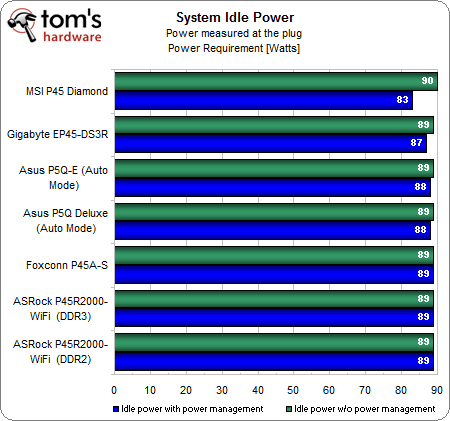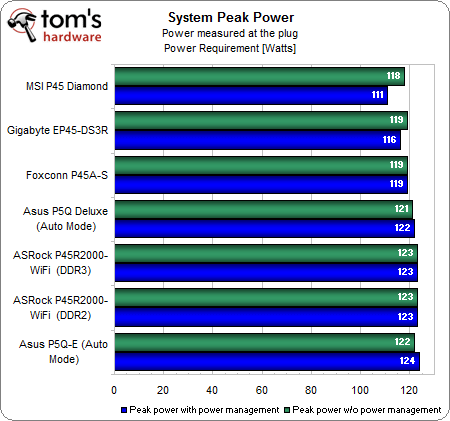Power-Saving Motherboards: Fact Or Fiction?
Power Measurements
We conduct every power-measurement test with all processor power-saving features (DES, EPU, and others) enabled, and we perform each test twice—first with the motherboards’ proprietary power-saving features disabled, then with them enabled. We select automatic power-saving modes where possible.
Idle Power

Most motherboards show a similar idle power. Remember that these results are obtained with processor power savings enabled, but without each motherboard’s power-saving features enabled. MSI’s P45 Diamond is the only product that ekes out a noticeable decrease in idle power consumption with its power-saving features enabled; the others provide minimal savings. Also keep in mind that the motherboards by ASRock and Foxconn don’t offer any power-saving features.
Remember also that we used a Core 2 Duo E7200, which is an extremely efficient, 2.53 GHz, 45 nm processor. This represents a major challenge for the test motherboards, as they have to save power where power consumption is already low.
Peak Power

The Core 2 Duo E7200 processor shows a gross power-requirement difference of approximately 30 W between idle and peak states on our test system running Windows Vista. The MSI and Gigabyte motherboards manage to show a noticeable difference using their power-saving features. Asus fails at peak processor power requirements, as the system requires 1 W or 2 W more power with EPU-6 enabled in Auto mode than with EPU-6 disabled.
Get Tom's Hardware's best news and in-depth reviews, straight to your inbox.
Current page: Power Measurements
Prev Page SYSmark 2007 Power And Performance Per Watt Next Page Efficiency Summary